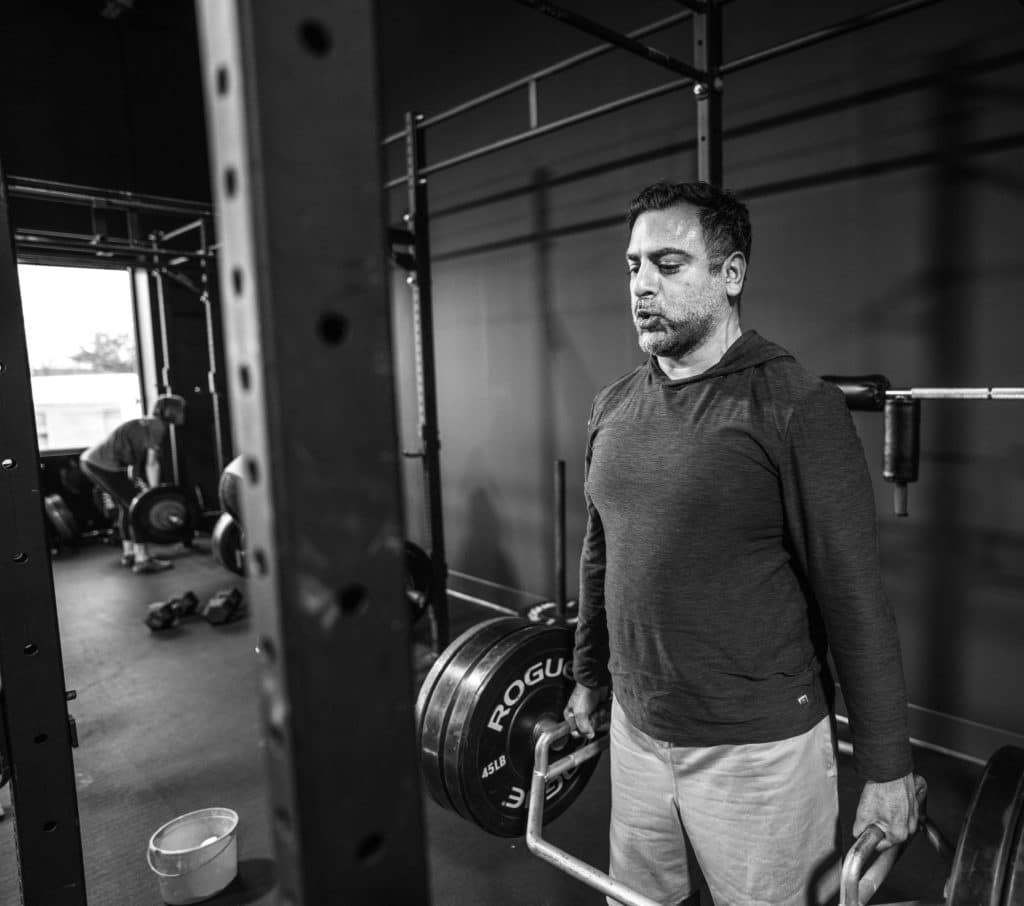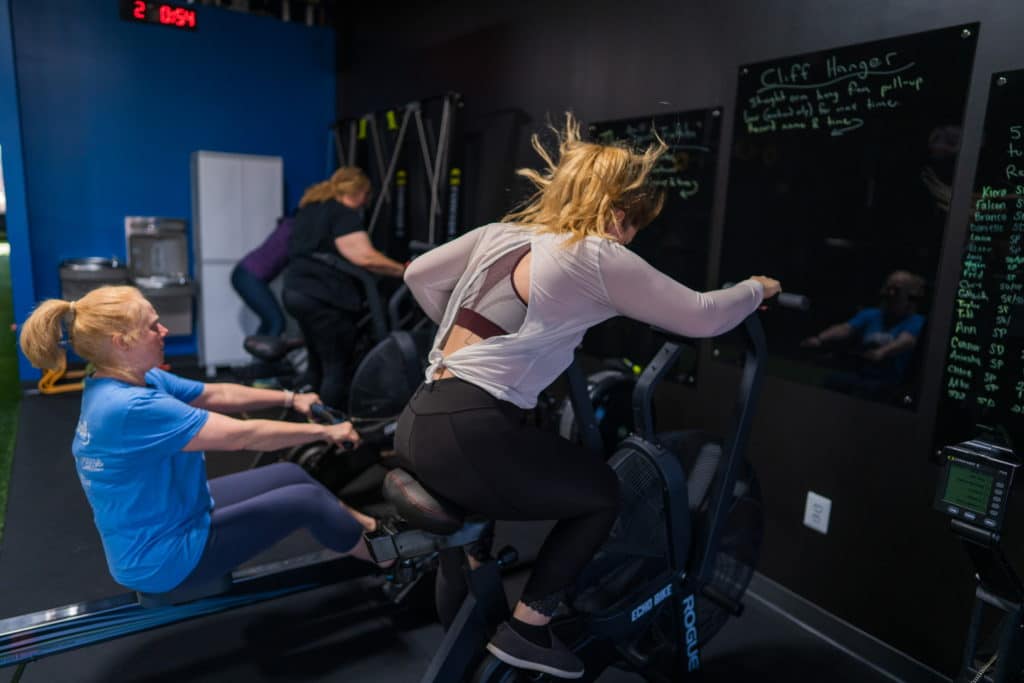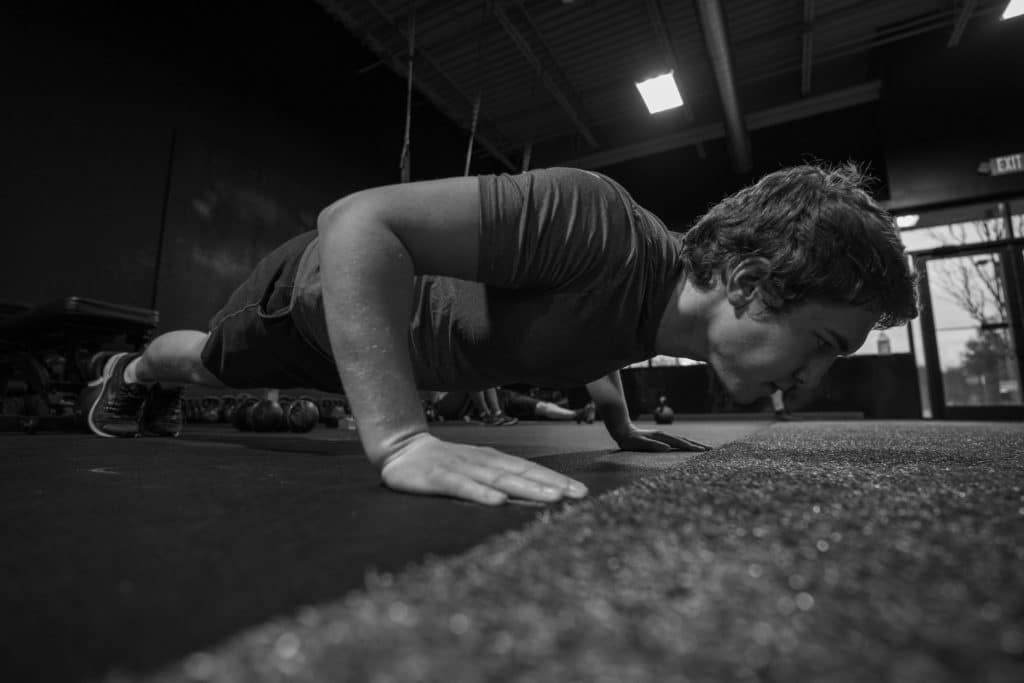We just kicked Phase 2 of 2022’s first training block right in the mommy daddy button. Now it’s time to do the same to Phase 3.
This entire training block is designed to build hot, nasty work capacity so that everything you do for the rest of this year feels easier. Whether you’re hiking your buns off, riding the W&OD, or getting ready for outdoor rec league sports, this training phase gives you the goods that you need to keep going.
During Phases 1 and 2, we worked a lot on building capacity. During this phase, we’re going to turn that capacity into power. Read on to find out how.
Monday: Strength A
Great news! Strength A, in this training phase, includes heavy squats and heavy deadlifts–as well as chin-ups, rows, and heavy upper body pressing. We’re hooking you up because we know you like to party. But also because you’re ready, and because you need to be ready for testing at the end of this training phase.
Strength A during the first two phases of this training block featured either squats or deadlifts, either upper body pulling or upper body pressing. I made that decision because there was a ton of resistance training volume throughout the rest of the week. A bigger heavy strength dose would have been too much for your body. So, I tempered it by giving you just enough to maintain your relative strength while we built work capacity on the other training days.
But now you’re ready to drop the hammer. Since you’ve had eight weeks to adapt to Strength B’s and Resilience’s high-volume strength training, you’ll handle the increase in heavy strength training volume during this phase.

You’ll deadlift and press during the B series. You’ll squat and pull during the C series.
Now, as you peruse the program, notice that the squat exercises and upper push exercises include an isometric hold at the bottom of each rep. That’s to build on the isometric strength we’ve trained since the beginning of January and to give you appropriate doses of heavy resistance. The isometric hold limits the amount of weight used while still giving you the strength stimulus that you need.
Not only is this designed to improve your relative strength, but you have a month’s worth of heavy strength practice before you’re tested in week 13.
Tuesday: Vigor
Vigor cranks this time around.
During the first two phases of this block, vigor built aerobic raw materials. In Phase 1 we built some tissue tolerance with aerobic plyometrics. The goal was to make your muscles, tendons, and ligaments ready for intense jumping and throwing while also getting your heart, blood vessels, and lungs ready for harder work. That leads us into high-resistance intervals (HRIs) and alactic power and capacity training in Phase 2. HRIs and alactic training teach us to repeatedly work at higher intensities while avoiding fatigue. They built you a bigger engine for the ass you’re about to kick in Phase 3.
Okay, how will Vigor crank?
We’re doing aerobic power intervals this time around. Now that our tissues are ready, our hearts and lungs are ready, and our minds are ready, we’re going to work at or around our aerobic threshold for four to five minutes at a time. This trains your aerobic system to generate energy at a faster rate–meaning you’ll be able to work at higher-heart rates for longer without getting tired. This type of training keeps your anaerobic-lactic system at bay. When your body goes anaerobic, you fatigue and slow down. Remember that point when you felt your body slowing down during your last 2000m row test? Aerobic power intervals build the fitness that you need to push past that point.

Psychologically, it gives you that hard push that you’re looking for while actually doing something positive for your body.
Wednesday: Strength B
Strength B features ladder pairings. Why? Mostly for funsies. But also to build on the last phase’s Strength B workout.
This session is similar to Phase 2’s Strength B session in that the training volume is almost the same. You’ll do 60 reps during week 1, 70 reps during week 2, and 105 reps during week 3. Like the last phase, you’ll do a hinge paired with a press and a squat paired with a pull. But instead of doing the same amount of reps every set, you’ll “climb the ladder” and then descend it. Meaning you should be able to use heavier weights than you did during the last phase while completing roughly the same training volume.
Thursday: Endurance
The reasons for endurance training never change. We need to train our heart to pump more blood with each stroke; we need to build mitochondria in our muscles; we need to increase our capillary density. These are the raw materials of a body that persists while other bodies fail. They are also the raw materials of recovery from, and during, other types of training.
This phase’s endurance class is denser than the last phase – meaning you’re doing more work. 🙂
When you do more work in the correct heart rate zones, your work capacity increases. That means life inside, and outside, the gym gets easier. And you keep going while other people get tired.
Friday: Resilience
No more HICT this time. I know, I’m sad, too. Let’s all pour one out for our homie. HICT built the aerobic capacity of our fast-twitch muscles. It also spread the work over the session. We’re building on that work during this phase by using every minute on the minute (EMOM) training.

You’ll do 6 to 12 reps of three different pairings, every minute on the minute, throughout each resilience session. Each minute includes more work than during the HICT sessions. Where HICT built raw materials for capacity, these specific EMOMs turn our capacity into power and stamina by asking our muscles to work hard and recover quickly in preparation for repeated bouts of work.
Now you know why you’re doing what you’re doing, let’s kick some ass during the next four weeks.
